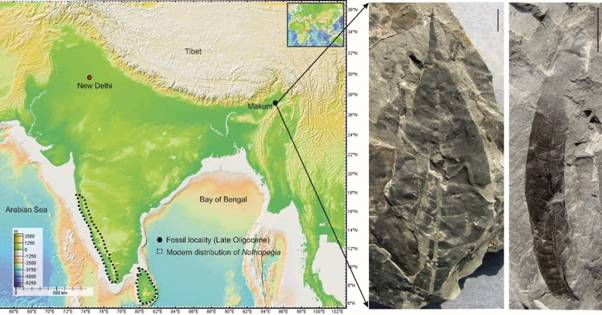Rapid Fire
Nothopegia Fossil Leaves
- 21 Jun 2025
- 2 min read
Fossilized leaves of Nothopegia, dated to 24–23 million years ago (late Oligocene epoch), were discovered in Assam’s Makum Coalfield.
- Researchers used morphological comparison with modern species, cluster analysis for identification, and CLAMP (Climate Leaf Analysis Multivariate Program) to identify the fossils and reconstruct the ancient climate of the region.
Nothopegia
- About: Nothopegia is a genus of flowering plants belonging to the Anacardiaceae family, which also includes mango.
- It comprises several tropical tree species valued for their ecological and medicinal significance.
- Present Distribution: Currently, Nothopegia is found exclusively in the Western Ghats, a UNESCO-recognized biodiversity hotspot in peninsular India.
- Botanical Features: These leaves are broad with reticulate venation and are typically adapted to warm, humid tropical climates.
- The fossils show a strong resemblance to current Nothopegia species in the Western Ghats.
- Cause of Extinction in the Northeast:
- The tectonic uplift of the Himalayas led to major climatic shifts in the region.
- Alterations in temperature, rainfall, and wind patterns made the Northeast unsuitable for tropical species like Nothopegia.
- As a result, the genus became extinct in the Northeast but survived in the climatically stable Western Ghats, showcasing an example of climate-driven species migration.
Makum Coalfield
- Located in Margherita, Tinsukia district of Assam, it is the only coal-producing region in Northeast India.
- It is also a significant paleobotanical site, rich in Tertiary-period fossil records.
| Read More: World's Oldest Lifeforms |







